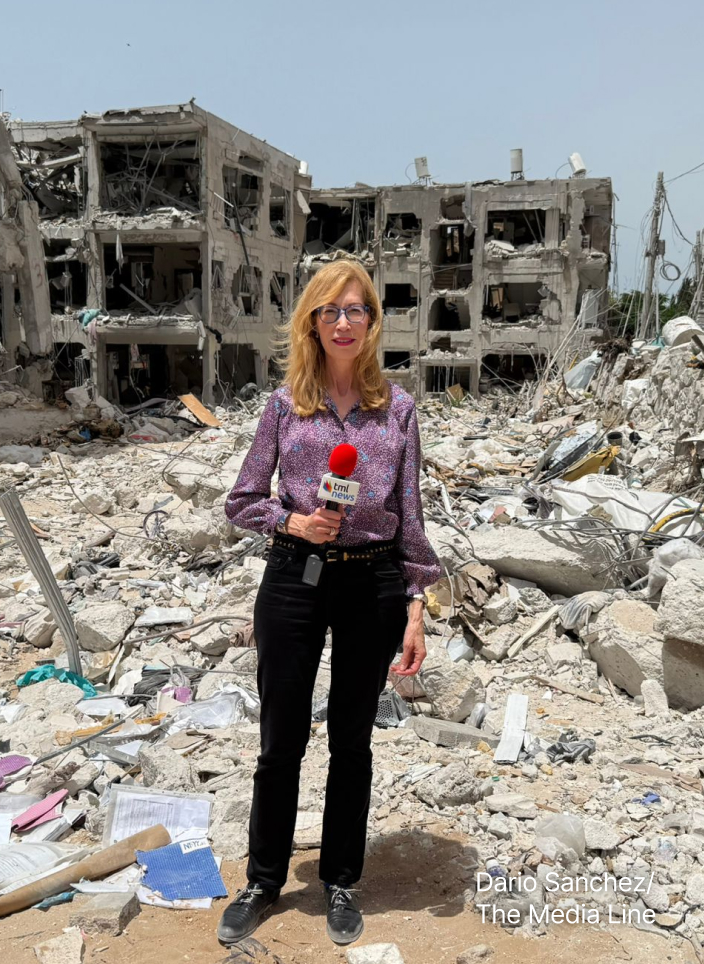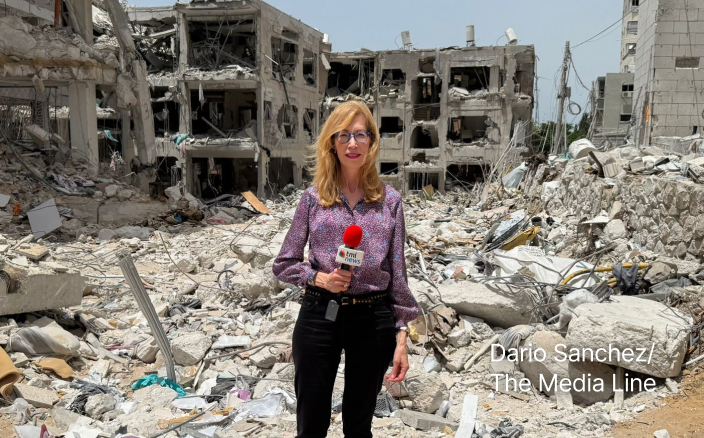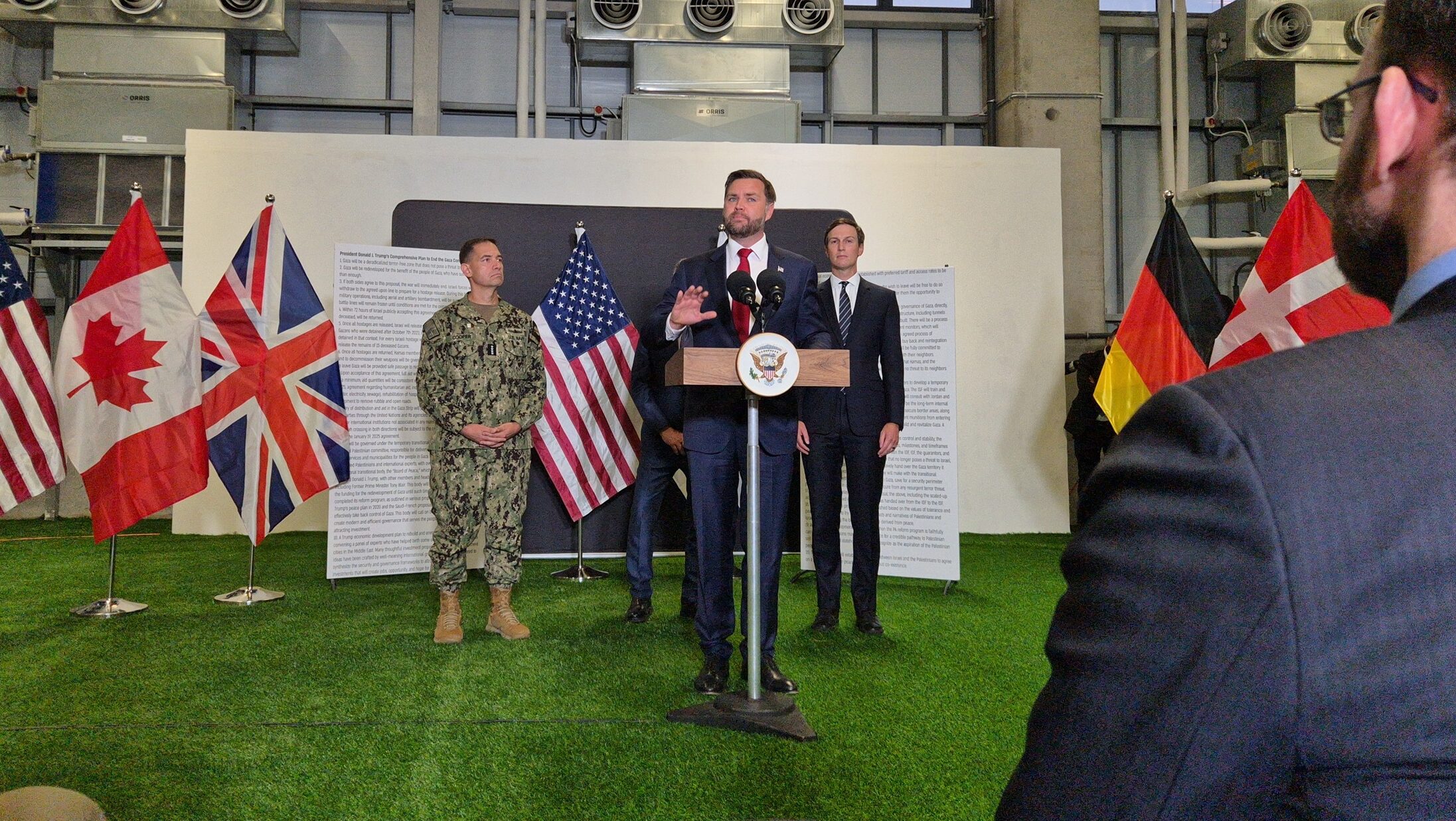US Opens Civil–Military Hub in Israel as Vance Presses Plan To Stabilize Gaza
The vice president toured the facility in Kiryat Gat, praised regional coordination, and outlined a phased plan focused on security, aid access, and targeted reconstruction
US Vice President JD Vance arrived in Israel on Tuesday and toured a new Civil–Military Coordination Center (CMCC) in Kiryat Gat designed to manage Gaza’s fragile truce, telling reporters the ceasefire “is going to take a very, very long time” to stabilize but is proceeding more smoothly than expected. The visit—his first to Israel as vice president—brought him to briefings with Prime Minister Benjamin Netanyahu and the US team shaping the deal, as officials outlined how an international security presence and a reconstruction track could move the territory from combat toward basic order and services.
We are one week into President Trump’s historic peace plan in the Middle East, and things are going, frankly, better than I expected that they were
Standing alongside US special envoy Steve Witkoff and senior adviser Jared Kushner at the newly opened coordination center, Vance framed the effort as a phased plan to quiet the front, return captives’ remains, and seed recovery while longer-term governance questions wait until basic safety and aid flows are reliable. “We are one week into President Trump’s historic peace plan in the Middle East, and things are going, frankly, better than I expected that they were,” Vance said, adding that “there is this weird attitude … where there’s almost this desire to root for failure.”
Vance credited Israeli authorities and regional partners—“the Gulf Arab states, Indonesia, the Turks”—for cooperating on logistics and deconfliction, and stressed that no US ground troops will deploy in Gaza. “You have Israelis and Americans working hand-in-hand to try to begin the plan to rebuild Gaza, to implement a long-term peace, and to actually ensure that you have security forces on the ground in Gaza, not composed of Americans, who can keep the peace over the long term,” he said.
A Truce Under Strain
Although Israel and Hamas agreed this month to halt fighting after two years of war, periodic exchanges of fire and disputed incidents have already tested the calm. Over the weekend, gunmen in Rafah killed two Israeli soldiers; Israel replied with airstrikes that Gaza health officials said killed dozens. Israeli forces also confronted people approaching a new demarcation line inside Gaza where the army has pulled back; the Israel Defense Forces said some were combatants, while Gaza officials said civilians were among the dead. Both sides publicly reaffirmed the truce, and Vance urged against interpreting every violent flare as a collapse.
President Donald Trump has treated the ceasefire as a flagship foreign-policy initiative and publicly warned that if Hamas violates it, unnamed regional partners “would welcome the opportunity” to strike the group with “heavy force.”
In the Knesset on Monday, Netanyahu said he would discuss “security challenges and the diplomatic opportunities we face” with Vance, while his office announced a meeting with Egypt’s intelligence chief, Gen. Hassan Rashad, to review implementation and regional spillover.
Disarmament and Policing
Our warning to Hamas is very straightforward. … Hamas has to disarm, Hamas has to actually behave itself.
What happens to Hamas’s arsenal is the central hurdle. Vance told reporters he will not set a deadline for disarmament, saying, “I don’t think it’s actually advisable for us to say this has to be done in a week,” and added that the task is technically hard and requires security arrangements that do not yet exist. He paired that caution with a sharp warning: “Our warning to Hamas is very straightforward. … Hamas has to disarm, Hamas has to actually behave itself, and Hamas—while all the fighters can be given some sort of clemency—they will not be able to kill each other and kill their fellow Palestinians.” If the group refuses, he said, “Hamas is going to be obliterated.”
Give the gift of hope
We practice what we preach:
accurate, fearless journalism. But we can't do it alone.
- On the ground in Gaza, Syria, Israel, Egypt, Pakistan, and more
- Our program trained more than 100 journalists
- Calling out fake news and reporting real facts
- On the ground in Gaza, Syria, Israel, Egypt, Pakistan, and more
- Our program trained more than 100 journalists
- Calling out fake news and reporting real facts
Join us.
Support The Media Line. Save democracy.


No reconstruction funds will be going into areas that Hamas still controls
Kushner, who worked on the initial negotiating package, said planners are exploring how to begin rebuilding in districts currently secured by Israel. “No reconstruction funds will be going into areas that Hamas still controls,” he said, calling early work a way to “give the Palestinians living in Gaza a place to go, a place to get jobs, a place to live,” while acknowledging details such as the chain of command remain under review.
Hostage Remains and the Pace of Returns
Under the ceasefire terms, Hamas returned 20 Israeli hostages in exchange for Israel’s release of nearly 2,000 Palestinian prisoners and detainees; Hamas has also transferred the remains of more than a dozen people, while Israel returned over 100 bodies to Gaza. Israeli officials say about 15 sets of remains are still unaccounted for and accuse Hamas of violating obligations by delaying retrievals. The Israeli military said Tuesday that the Red Cross was en route to receive several coffins inside Gaza.
Vance urged patience with the recovery effort, describing the search for bodies in a battered urban landscape. “Some of these hostages are buried under thousands of pounds of rubble. Some of the hostages, nobody even knows where they are,” he said. “It is a focus of everybody here to get those bodies back into their families so they can have a proper burial. … This is not going to happen overnight.”
A senior Hamas official, Khalil al-Hayya, told Egyptian state television the group intends to return all bodies “as stipulated by the deal,” but said excavation is difficult because the “changed landscape” has buried remains under wreckage.
What Phase 2 Might Include
The administration’s public language suggests a staggered approach: complete initial swaps and returns; stand up a security mechanism with participation from regional states; expand access for humanitarian groups; and begin targeted reconstruction in areas where forces can protect workers and materials from diversion. Vance said future governance is not today’s assignment. “What does the ultimate authority in Gaza look like? I don’t know the answer to that question,” he said. “We need to reconstitute Gaza. We need to reconstruct Gaza.” A Palestinian administration independent of Hamas would eventually assume control if basic security and services take hold.
Diplomats in Cairo, Doha, and Ankara remain part of the architecture. Egyptian officials have shuttled among capitals to keep channels open, with Rashad’s Jerusalem meetings on Tuesday focused on ceasefire mechanics and border operations, according to Netanyahu’s office. In Washington, the American president has sought pledges from partners to contribute personnel and money to any international force, and to threaten consequences for renewed rocket fire or raids.
The War’s Toll and the Urgency of Relief
The October 7, 2023 attack on southern Israel by Hamas and other groups killed about 1,200 Israelis and foreign nationals and led to roughly 250 hostages being taken into Gaza, according to Israeli officials. Israel’s campaign in the strip since then has leveled neighborhoods and killed more than 68,000 Palestinians, Gaza health authorities say. Around 900 Israeli soldiers have been killed in the fighting. The ceasefire that began October 10 paused sustained air and artillery strikes and allowed more trucks and fuel to enter, but aid groups say needs still far exceed deliveries and that basic services require repairs and security guarantees to function.
Kushner said the early aid pipeline has benefited from “surprisingly strong coordination between the United Nations and Israel,” a claim that marks a rhetorical shift after months of public friction between Israeli officials and UN agencies over access and procedures. Whether that coordination holds—and whether it expands into a broader recovery plan in areas outside Hamas control—will shape whether displaced people can return to repaired housing, schools can reopen on limited schedules, and hospitals can operate with predictable supplies.
Security Force and Decision-Making
Reporters pressed Vance on which nations might contribute to an international security force and whether foreign soldiers could deploy in Gaza. He avoided naming participants, said multiple governments have volunteered, and emphasized that Israel will decide which foreign units, if any, operate nearby. “When it comes to important troops on their soil, we do think that there’s [a] constructive role,” he said in response to a question about Turkey’s participation, before reiterating that foreign-force composition is “a question for the Israelis to agree to.” At several points, he cautioned against arbitrary deadlines that might backfire. “It’s never been done before,” he said of the proposed security mission. “In order for us to give it a chance to succeed, we’ve got to be a little bit flexible.”
Stakes if the Truce Fails
Vance pointed to the American president’s public message and to regional pressure in warning of consequences if Hamas rejects disarmament and attacks resume. He said Israel and “all of our Gulf Arab friends” support the ceasefire’s core conditions and that “very bad things are going to happen” if the group fails to comply. For now, officials in Washington say the goal is to expand the parts of Gaza considered safe enough for basic services and early rebuilding, then widen those zones as the security concept and policing take hold.
Lots of tears, lots of people, really, really grateful to President Trump for getting their children home
Witkoff, who has met freed captives and their families in recent days, described difficult scenes and gratitude. “Lots of tears, lots of people, really, really grateful to President Trump for getting their children home,” he said. He called the coordination center’s model portable and said lessons learned could inform other stabilization efforts. “The CMCC that we’re setting up now, this is going to be used in other conflicts as we figure out all the intricacies of how to … go from war to peace.”
You don’t do difficult things by only doing what’s 100% certain. You do difficult things by trying.
Vance asked for public patience as the process unfolds. “There are going to be hills and valleys,” he said. “You don’t do difficult things by only doing what’s 100% certain. You do difficult things by trying.”
Gabriel Colodro contributed to this report.

